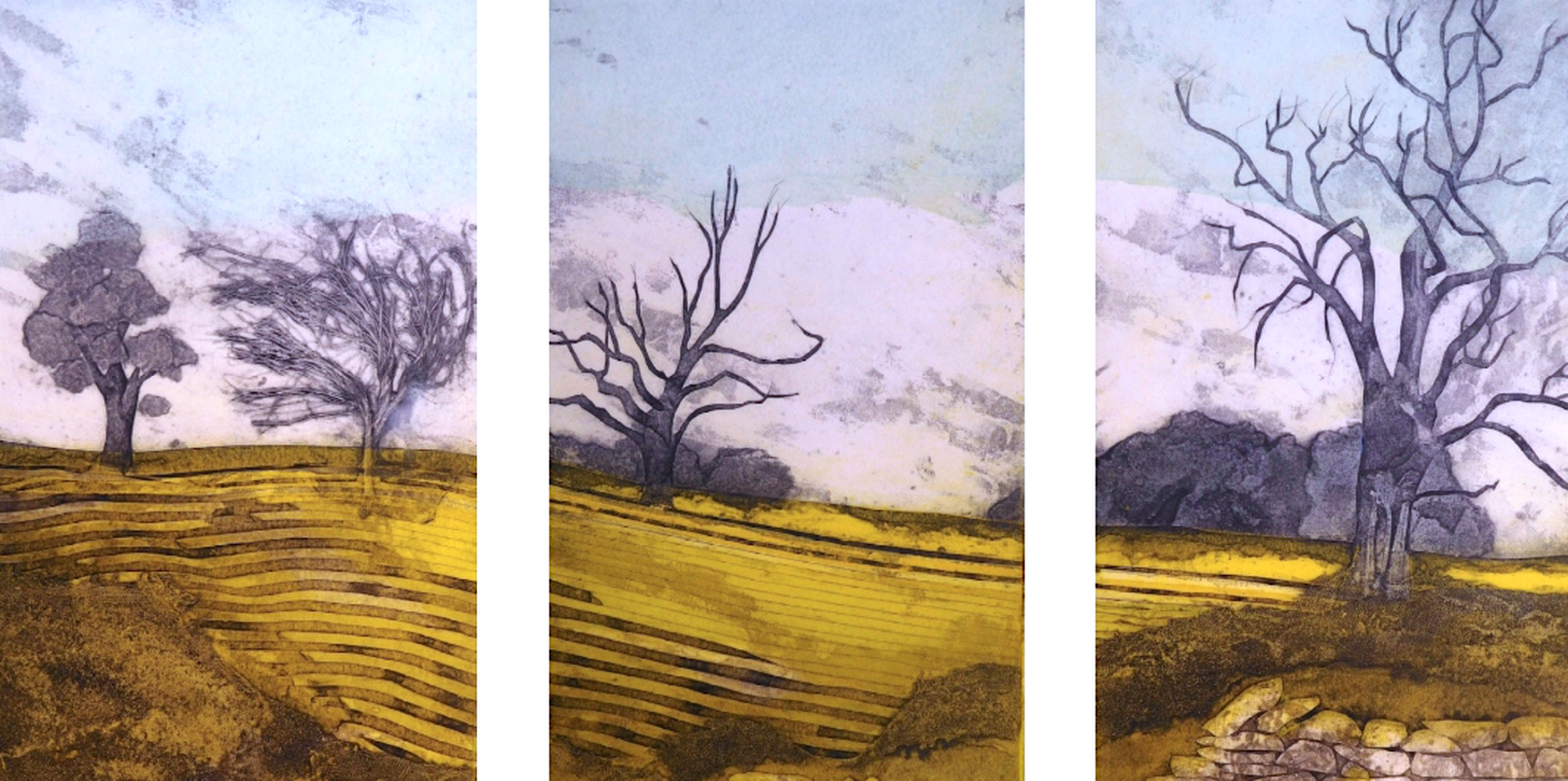
SARAH ROSS-THOMPSON AND THE ART OF COLLAGRAPHED PRINTS
I interviewed artist Sarah Ross-Thompson whose exceptional Collagraphed prints use fabrics, lichen, porridge and string to create images of the dramatic Scottish Highlands where she
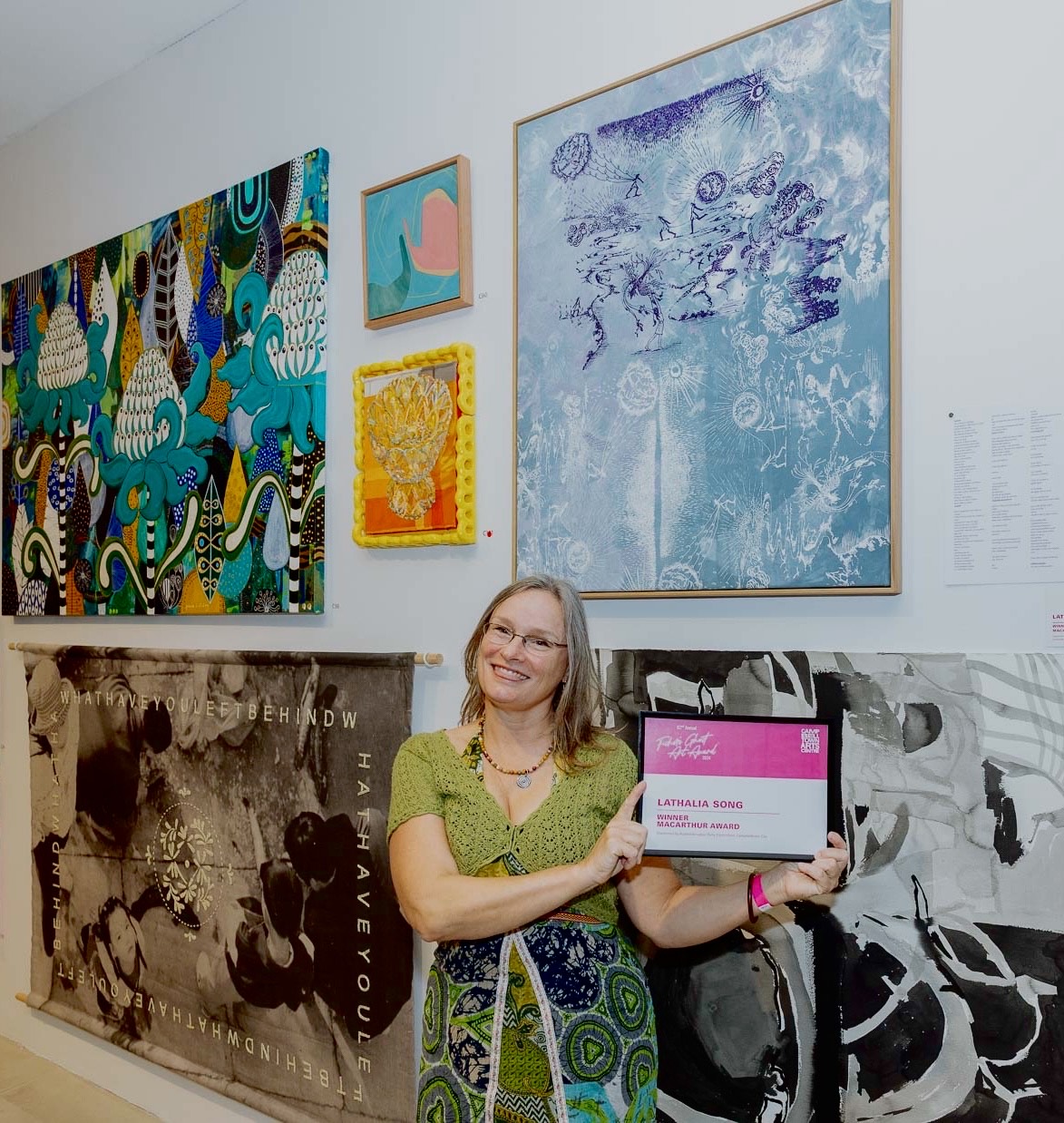

I interviewed Lathalia Song whose art and poetry asks questions inspired by the natural world, and translates an idea through several mediums, which include ink painting. Lathalia also describes the importance of several charities she supports and the colonialist legacy of Australia. Lathalia says: “I create, to make sense of my story and translate what I ‘hear’ from nature into something kind of legible. Lately it feels like I’m creating my own language.”
Leslie: Tell us about your name Lathalia Song and its importance to you as a creative person.
Lathalia: Lathalia means courage and hope. It’s an artist name I made up when I was ten years old after reading an obscure children’s book called Fior, it inspired me to think of original ideas. Reading it again in my forties I see that my childish imagination added way more to the manuscript than was there, I love that about creative things. They are like a springboard, not a static thing at all.
In Year 4 I sketched an illustration of my grandmother. The school art book I used had a purple cover. (My little art school of fifteen years has a purple floor and designs on the walls) I also made a sketch of a local old house called Gilbulla. Those drawings made me so happy I decided to be an artist and writer.
Also to learn guitar, piano, sing, dance… Anyhow, years later I chose the name Song after my divorce. Singing represents all the creative things for me. Also, I’d been signing my pictures that name for years anyways, so after a divorce I chose the name officially. Choosing my own name has created a great deal of healing.
Leslie: Give us a picture of your involvement with Authora Literary Journal. How did you start as a founding member, what is the aim and provenance of the journal and what do you bring to it?
Lathalia: Marrickville writers group had a poetry evening at Gasoline Pony in 2014, where I wrote a poem on a beer coaster and performed it. Loved it! Great set up and group of regulars and transient writers, such a cool way to meet people through their writing ideas. I think in 2019 the organisers, my friends Roger, Oormila and Carlo decided to organise an online journal that is blind reviewed as a way of creating opportunities for emerging writers to be published. Often writing can be chosen for publication as it elevates the journal’s reach by choosing already established writers. Great to read amazing established writes, not so easy for new writers. Super discouraging if you’ve no following and trying to begin! So we wanted a journal that allowed anyone to join in if their work merited it, not their following!
The name authora australis was Roger’s idea I think, to try and reflect our nationality and function plus participate internationally in the journal scene. As an artist poet I often look for the visual aspects of the poem itself and its images. It can be overlooked as a structural detail to use imagery well in your writing. Imagery also allows you to break structure without fully losing your reading which can be very fun.
Leslie: Take us through your creative process both as an artist and a poet. How do these two disciplines work together for you? Which comes first? What are the crossover/interactive aspects of art and poetry for you?
Lathalia: Sometimes the image turns up first or the writing is first. Or they emerge as I write and sketch. I always use both for each concept, and cycle through it a few times to refine the ideas.

Why? is a question I’ve been fascinated with since very young. It’s led me to read all kinds of writings and join in on volunteer things, travels, studies and creative projects. That process of asking why and following the clues is the context of all my poetry and art. I have some personal why questions that seem to be easier to hold when I read history. Complexity is often the answer to my questions. It was very enticing to hear from my cultural religion that there were concrete answers, which I fervently explored, finding that they were principles requiring wisdom, not concrete at all. And way more inclusive and fluid than I had been led to believe.
Anyhow that means I try to work out the patterns I’m learning and then see if they make sense in nature, then use those ideas to create images or ink patterns to then abstract in screen printing. My graphic design training has constrained my art into very representational designs. So to allow experimentation I use the inks and layers in the screen-printing stage to see what happens. Kind of a mirroring of the searching process for all the answers to why?
Leslie: You teach creativity in the community (particularly to children) and work as a writer in residence. What have been the key takeaways for you from this teaching?
Lathalia: It’s very comforting knowing there’s a whole bunch of quiet reflective souls who flourish in creative spaces. Culturally everything is very noisy right now so it’s been refreshing to be with so many quiet creatives. Teaching has been good practice with clear communication and varying the ways to break down a task to suit different learners. To practice using mistakes as opportunities too. Also just a wonderful bunch of people to know, very fun!
The artist and writing residencies with Westwood’s Wedderburn and Parramatta, plus Newcastle Arts built up my personal creative productiveness. So I can now sit and write and draw for consecutive hours on my own work. That was such a step of courage at first, being so used to having clear job guidelines as a graphic designer and then teacher. To make work guided by my own ideas has taken years of practice so far.
Leslie; Can you describe the part nature plays in your work, both as a pre-creative stimulus and a presence in your (semi-abstract?) canvasses?
Lathalia: Nature is almost everything. Obviously I’m playing a part in expressing it. Time outdoors is what’s taught me about the fragility, kindness and joy of life, that it exists simultaneously with tragedy and cruelty. That context is why I try to answer the why. One consistent answer lately is to sit with not knowing. That seems to be the moment before very cool inspirations, being able to sit with not knowing. Knowing why turns out not to be very useful sometimes. Cause you hold on to it too tightly then. After all that effort!
So usually I bushwalk, swim or my hammock in the garden. Gardening too. Once a baby skink came and investigated and wandered around with no fear as I sat on a rock, maybe a full twenty minutes. Things like that inform my poetry and then I draw the images in the poems. Then rewrite and redraw. Then transfer to film. The last stage is imagining the colours and experimenting with those before I print in layers. In that stage I remember the places I’ve walked and swum, how the colours interact with each other. What tones change in cloud and sunrise and sunset. Plus all the patterns I learn about.
Leslie: How does your artwork connect with the missions of Campbelltown Art Centre and Fairfield Catholic Care?
Lathalia: I’m a local Campbelltown artist on dharawahl land. So I submit to the friends annual exhibit and the fishers ghost art prize. The arts centre works hard to connect with the community here. Happily I was awarded highly commended in the Friends exhibition in 2024 and won the MacArthur Award 2024 at the Fishers ghost art award. I was very happy to be awarded locally where I have taught and lived for so long.
A showcase of my art and advocacy story was requested for the launch of the PHN commissioned pilot project: ‘Supporting Recovery’ which ‘provides free, recovery support for victim-survivors of family, domestic and sexual violence. Free, culturally sensitive, holistic support to for up to two years per person.
The program aligns with the National Plan to End Violence Against Women and Children, addressing prevention, early intervention, response, and recovery.’

So whilst I was thrilled to support the launch. I am also very motivated to see the pilot extended and offering much longer care. It’s my goal to see the re-instatement of the case-based services we had for over thirty years in Australia, which could allow up to ten years or more support. That changed in 2018/19 when many domestic violence services had funding cuts. We see the results on the news now, unsupported people in more danger and losing their lives. Family and generational trauma can be very complex with the effects lasting for a lifetime. Happily my story at that event inspired a purchase of one of my artworks about grief from complex trauma. That was a very fulfilling outcome to a challenging opportunity for me. It’s now in the foyer of a family trauma support centre, the poem with the artwork is about transforming grief into hope,
Leslie: Tell us about your mental health advocacy work with One Door and Sydney Southwest PHN. Which charities do you support, and why them?
Lathalia: I’ve always lived with or worked with people with complex mental health diagnosis and generational trauma. Passionately believe that great listening and active support in all areas supports living well with a lifelong diagnosis. Clinical interventions save lives but do not necessarily support living well.
Encouraging others to be brave enough to be supportive in their work and life is my intention as I work either as a community member on a committee (consulting on newly commissioned services and their accessibility and safety). One Door is the old Schziophrenia Association one of the first to employ lived experience workers, with consistently amazing results. They employ us to educate at Sydney uni pharmacy school, reaching many faculties and students as part of their mental health first aid training. We give feedback and story telling on their efforts at role playing support for complex patients.
PHN is the Primary health network, they are the old Medicare local. Much of the medical funding outside hospital goes through them. They run co-design with community, non-government organisations and clinicians to design new services to reach disadvantaged and general populations with health services. I work for the mental health team as a committee member and advocate at conferences and co-design sessions.
Purchase of my artworks means I give a portion to either Blue Knot foundation or Just Reinvest.
Blue Knot Foundation is the National Centre of Excellence for Complex Trauma. If you or someone you care about is living with the effects of abuse, neglect, or violence, they provide information and support for anyone who is affected by that complex trauma. Complex trauma is repeated, ongoing, and often extreme interpersonal trauma (between people) – violence, abuse, neglect or exploitation experienced as a child, young person and adult. If you are a professional, work with survivors, and are looking for training, practice or organisational support, please visit our Professional community.

Just Reinvest is a social justice organisation offering a way of reducing Aboriginal People’s interactions with the criminal justice system. Informed by data, Aboriginal communities can develop their own solutions for change, making them safer and more just.
Leslie: How has being Australian shaped you as a person and artist/writer?
Lathalia: For me being Australian is painful and wonderful. The environment here is spectacular and ancient. I feel as if the country here has healed me. But it’s also full of terrifying tragedies. We are a convict, colonial and settler nation. Also a nation of migrants. That means there are injustices so profound I cannot often bring myself to tell the stories.
Reading the aboriginal deaths in custody report at 19 years old changed my life. The history I had been taught was incomplete on purpose. To cover up slavery and mistreatment and murder of aboriginal and islander people here. We still have people in jail from unpaid fines dying. Children are jailed when we can afford and know how to offer the complex supports they need to recover from generational traumas. We treat our refugees and asylum seekers as criminals and leave their applications unanswered for too many years. I feel simultaneously grateful to be Australian and in horror of it, my family were farmers four generations back here. I am part of this awful and wonderful story. It’s very painful.
That’s why I create, to make sense of my story and translate what I ‘hear’ from nature into something kind of legible. Lately it feels like I’m creating my own language.
Next week I interview Deaf Irish author Lynn Buckle, whose second novel What Willow Says won the international Barbellion Prize.
ABOUT LESLIE TATE’S BOOKS:

I interviewed artist Sarah Ross-Thompson whose exceptional Collagraphed prints use fabrics, lichen, porridge and string to create images of the dramatic Scottish Highlands where she
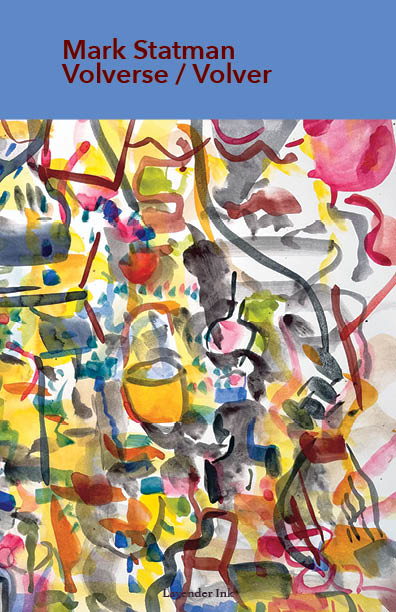
Part 2 of my interview with Mark Statman looks closely at Mark’s Latin American poetic influences, his life in Mexico and ends with an extract
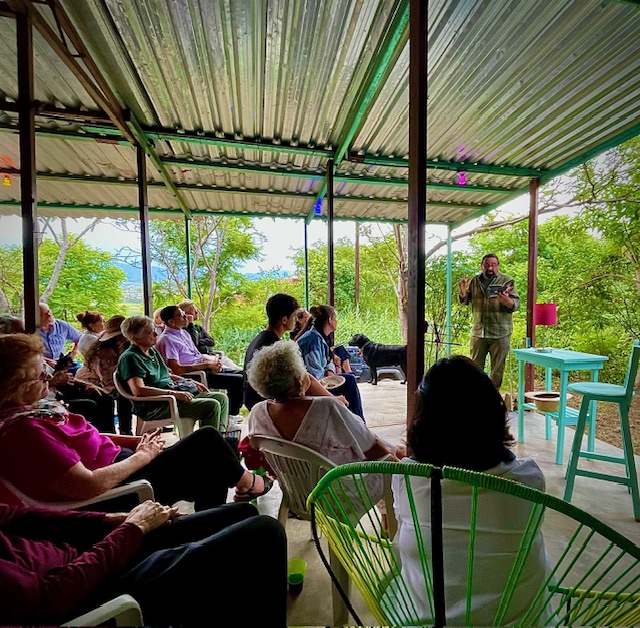
I interviewed international poet and translator Mark Statman about Volverse/Volver, his 14th published collection. Mark, who has won national arts awards, is Emeritus Professor of Literary
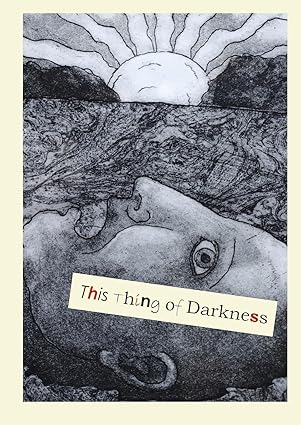
I interviewed Lisa Dart, finalist in the Grolier, Aesthetica and Troubadour Poetry Prizes and author of The Linguistics of Light (poems, Salt, 2008), Fathom (prose
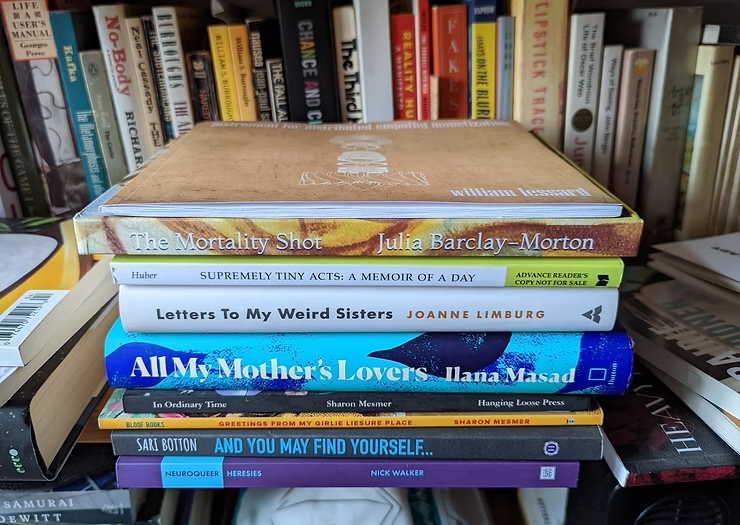
I interviewed writer Julia Lee Barclay-Morton about her experience of autism. Julia began as an experimental dramatist in New York, moving to the UK to
| Cookie | Duration | Description |
|---|---|---|
| cookielawinfo-checkbox-analytics | 11 months | This cookie is set by GDPR Cookie Consent plugin. The cookie is used to store the user consent for the cookies in the category "Analytics". |
| cookielawinfo-checkbox-functional | 11 months | The cookie is set by GDPR cookie consent to record the user consent for the cookies in the category "Functional". |
| cookielawinfo-checkbox-necessary | 11 months | This cookie is set by GDPR Cookie Consent plugin. The cookies is used to store the user consent for the cookies in the category "Necessary". |
| cookielawinfo-checkbox-others | 11 months | This cookie is set by GDPR Cookie Consent plugin. The cookie is used to store the user consent for the cookies in the category "Other. |
| cookielawinfo-checkbox-performance | 11 months | This cookie is set by GDPR Cookie Consent plugin. The cookie is used to store the user consent for the cookies in the category "Performance". |
| viewed_cookie_policy | 11 months | The cookie is set by the GDPR Cookie Consent plugin and is used to store whether or not user has consented to the use of cookies. It does not store any personal data. |